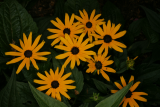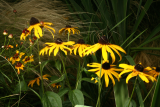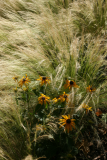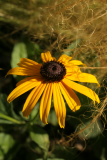Additional notes (click to expand)
Commemorative
It is named for Olof Rudbeck, father (1630–1702) and son (1660–1740). Olof Rudbeck the Elder was professor of medicine at Uppsala University, and established a botanic garden there. He was the discoverer of the human lymphatic system. His son succeeded his father as professor of medicine, and one of his students was Carl Linnaeus (1707–88) who named the genus Rudbeckia after him and his father.
William Sullivant was a specialist in mosses
Oakeley, Dr. Henry. (2012). Doctors in the Medicinal Garden. Plants named after physicians. Royal College of Physicians.
link
Other use
It is a plant which is poisonous to cattle, sheep and pigs with no medicinal uses. Austin (1974) discusses R. hirta, also regarded as a toxic plant. It was used externally by the Cherokee to bathe sores and snakebites and made into a tea for treating diarrhoea; the Seminoles used it for headaches and fever and the Miccosukee for sunstroke and headache. The Cherokee and the Iroquois used it to treat intestinal worms.
Oakeley, Dr. Henry F. (2013). Wellcome Library notes.
link
Geographical distribution
- Northern America
Rudbeckia fulgida var. sullivantii 'Goldsturm'
Family: ASTERACEAEGenus: Rudbeckia
Species: fulgida
Variety: sullivantii
Cultivar: 'Goldsturm'
Common names: Coneflower
Distribution summary: Canada
Habit: Perennial
Hardiness: H5 - Hardy; cold winter
Garden status: Not currently grown
Reason for growing: Commemorative, medicinal






